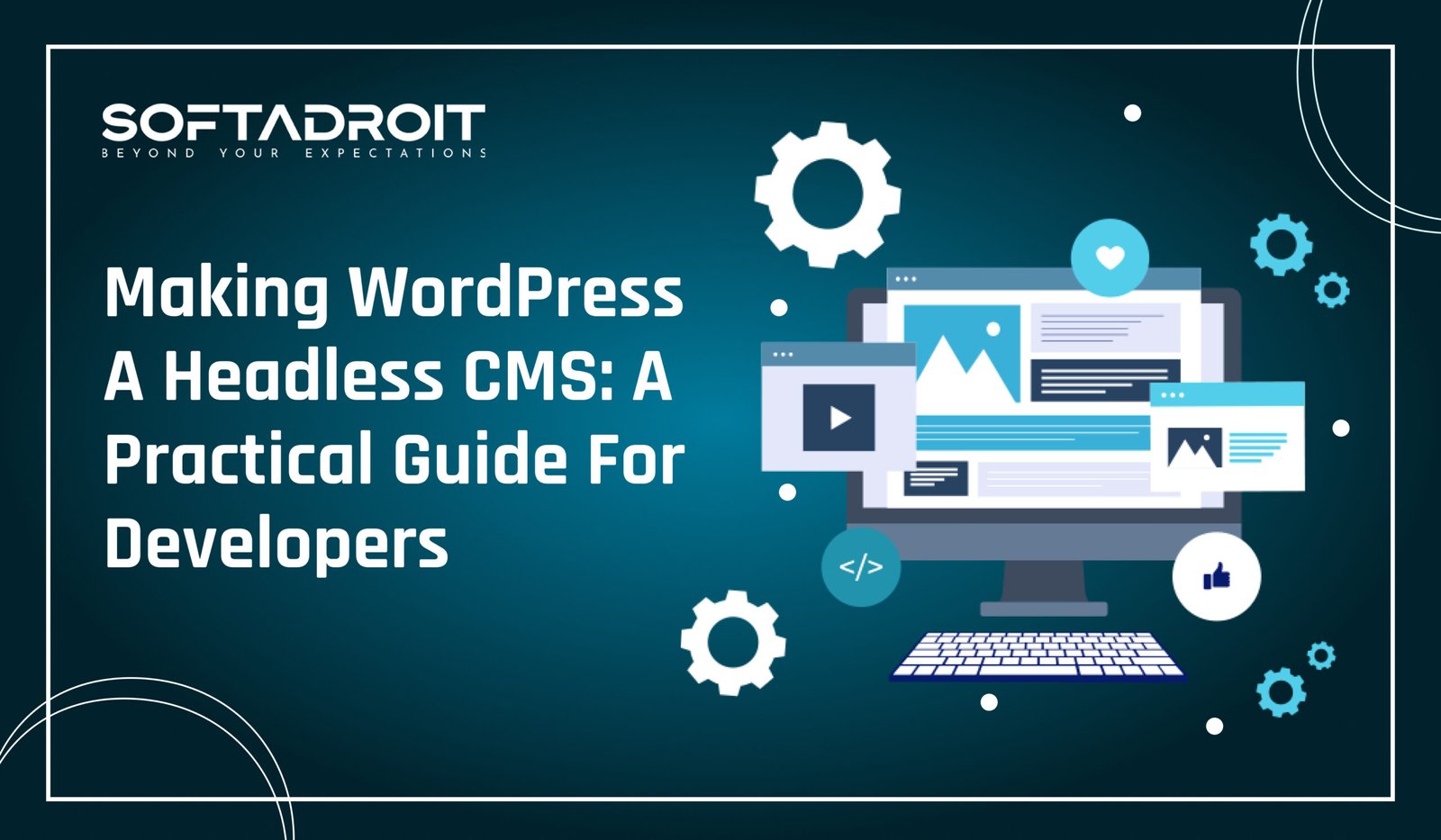
Unlock the Full Potential of WordPress with a Headless Approach
In the world of modern web development, adopting a headless CMS architecture can significantly enhance your site’s flexibility and performance. For developers accustomed to traditional WordPress setups, transitioning to a headless WordPress CMS might seem complex but offers powerful benefits. This guide will walk you through the steps required to convert WordPress into a headless CMS, offering practical advice to help you leverage this approach effectively.
1. What is a Headless CMS and Why Use It?
A headless CMS is a content management system that decouples the backend (where content is created and managed) from the frontend (where content is displayed). Unlike traditional CMSs, which handle both content management and presentation, a headless CMS focuses solely on managing content.
Advantages of a Headless CMS
Transitioning to a headless WordPress CMS provides several advantages:
a. Flexibility:
You can use various frontend technologies (like React, Vue.js, or Angular) to create custom user experiences.
b. Scalability:
A headless CMS can handle high traffic more efficiently because the backend and frontend operate independently.
c. Omnichannel Delivery:
Content can be delivered across multiple platforms (web, mobile, IoT) from a single source.
By decoupling the content from the presentation layer, you gain greater control over how and where your content is presented, making it easier to implement modern, interactive user experiences.
2. Setting Up WordPress for a Headless Architecture
To start using WordPress as a headless CMS, you need to configure it to serve content via APIs. Follow these steps:
a. Install WordPress:
Begin by installing WordPress on your server. Ensure that your installation is up-to-date and that you have administrative access.
b. Enable REST API:
WordPress includes a REST API out of the box. Verify that the REST API is enabled by accessing . This endpoint should return a JSON response with information about available API routes.
c. Install GraphQL (Optional):
For more flexible querying, consider installing the [WPGraphQL] plugin. This plugin adds GraphQL support, allowing you to query data more precisely and efficiently compared to the REST API.
3. Integrating a Frontend Framework
Once WordPress is configured as a headless CMS, you need to choose a frontend framework to interact with the API. The choice of framework depends on your project requirements and preferences.
a. Choosing a Framework:
Here are popular options:
- React: A powerful library for building user interfaces. Its component-based architecture makes it a good fit for dynamic and interactive applications.
- Vue.js: A progressive framework that is easy to integrate and use. It provides a flexible solution for building modern user interfaces.
- Angular: A robust framework with built-in tools and features for developing large-scale applications.
b. Fetching Data:
To connect your frontend with the WordPress backend, use HTTP clients such as Axios or Fetch API to make requests to the REST API or GraphQL endpoint. For example, to fetch posts via REST API, use
4. Handling Authentication and Security
Security is crucial when developing a headless CMS. Implement robust authentication and authorization to protect your content and API endpoints.
a. Implement Authentication:
For secure API access, use authentication methods such as OAuth or JWT (JSON Web Tokens). The JWT Authentication for WP REST API plugin helps secure REST API endpoints with JWT.
b. Secure API Endpoints:
Ensure that only authorized users can access or modify content. Use roles and permissions in WordPress to control access, and configure your frontend to handle authentication tokens securely.
5. Optimizing Performance:
Performance optimization is essential for delivering a fast and responsive user experience. Here’s how to enhance performance in a headless WordPress setup:
a. Cache Data:
Implement caching mechanisms to reduce load times and server strain. Use server-side caching solutions like Varnish or Redis to cache API responses and improve performance.
b. Optimize Assets:
Minimize frontend asset sizes by compressing images, using efficient file formats, and leveraging CDNs (Content Delivery Networks) to deliver static resources quickly.
c. Monitor and Scale:
Regularly monitor the performance of your API and frontend. Use tools like Google Lighthouse or New Relic to track performance metrics. Based on the data, adjust your server resources and infrastructure to handle scaling needs effectively.
6. Managing and Updating Your Headless CMS
Maintenance is key to ensuring that your headless CMS remains functional and up-to-date. Implement a routine maintenance schedule to keep your system in top shape.
a. Regular Updates:
Keep your WordPress installation, plugins, and frontend dependencies updated to benefit from the latest features and security patches. Regularly review and update your API integrations as needed.
b. Backup and Recovery:
Set up automated backups for both your WordPress content and frontend application. Ensure that you have a reliable recovery plan in case of data loss or system failures.
Conclusion
Transforming WordPress into a headless CMS offers significant advantages in flexibility, scalability, and performance. By following this practical guide, developers can effectively decouple the backend and frontend layers, enabling the use of modern frontend technologies while leveraging WordPress for robust content management.
The process involves configuring WordPress with REST API or GraphQL, integrating a suitable frontend framework, handling authentication and security, optimizing performance, and maintaining the system. Embracing a headless WordPress CMS model allows for more dynamic and efficient web solutions, meeting contemporary development needs and enhancing user experiences.

